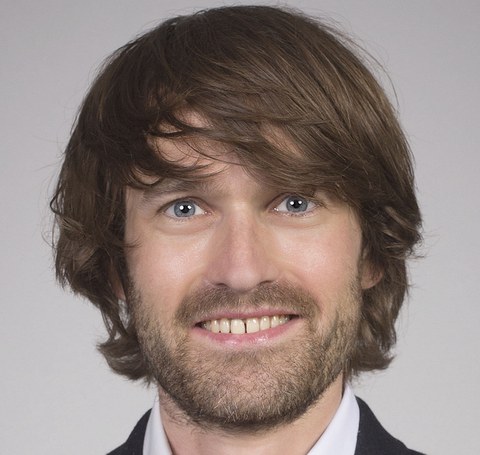Oct 22, 2019
Research: Spatial control of superconductivity opens up new possibilities
An international team of scientists, including physicist Dr. Tobias Meng from TU Dresden, has succeeded in producing a material in which superconductivity can be spatially controlled - an important milestone on the way towards new superconducting technologies. The results of the research collaboration were published last week in the renowned journal Science.
The phenomenon of superconductivity has fascinated scientists all over the world for over 100 years. In 1911 Heike Kamerlingh Onnes, a pioneer of low-temperature physics, discovered this macroscopic quantum state in which electrons travel without resistance in certain materials at extremely low temperatures. Superconductivity offers the potential to revolutionize current technologies and is already used in important applications today, for example in magnetic resonance imaging (MRI). Superconductivity could also play a key role in the worldwide race to build the first quantum computer.
Superconductors are often very robust and hard to influence, and one important challenge is to find new materials in which the superconducting state can be controlled in a device. An international team of scientists headed by the University of Lausanne and Cornell University that also involves the Quantum Design group of the Technische Universität Dresden has been working on a particularly promising class of unconventional superconductors, the so-called heavy fermion materials.
The researchers have made a surprising discovery with the metal CeIrIn5, which becomes superconducting at very low temperatures (about -273°C): they succeeded in producing the material in such a way that it has both superconducting and normal conducting regions. In a next step, the scientists have developed a detailed model that enables them to design complex superconducting patterns and distribute them in a controlled manner by varying the temperature in the material. The results of their research were published last week in the renowned journal Science.
"The fact that superconductivity can be specifically switched on and off in different regions of a microchip without changing the material itself opens up completely new technological possibilities, for example in the construction of Josephson junctions, which are also important for quantum computers," explains TUD physicist Dr. Tobias Meng, who contributed to the theoretical treatment of the experimental findings.
In order to produce the controllable superconducting samples, the scientists had to place very thin layers of CeIrIn5 (only about one thousandth of a millimeter) to a sapphire substrate. When such a sample is cooled, the metal CeIrIn5 contracts much more strongly than the sapphire substrate. The resulting mechanical stresses were ultimately used by the scientists to control superconductivity. This new approach allows researchers to “draw” superconducting circuitry on a single crystal bar, a step that paves the way for new quantum technologies.
The Quantum Design group
The Quantum Design group at the Institute of Theoretical Physics at TU Dresden, headed by Dr. Tobias Meng, is investigating the constructive creation and control of special quantum states. The group has been funded by the Emmy Noether Programme of the DFG since 2017. It is part of the Collaborative Research Centre SFB 1143 "Correlated Magnetism: From Frustration to Topology" and the Cluster of Excellence ct.qmat.
Homepage:
https://tu-dresden.de/mn/physik/itp/tfp/die-professur/beschaeftigte/quantum-design
Original publication:
M. D. Bachmann G. M. Ferguson, F. Theuss, T. Meng, C. Putzke, T. Helm, K.R. Shirer, Y.-S. Li, K. A. Modic, M. Nicklas, M. König, D. Low, S. Ghosh, A. P. Mackenzie, F. Arnold, E. Hassinger, R. D. McDonald, L. E. Winter, E. D. Bauer, F. Ronning, B. J. Ramshaw, K. C. Nowack, and P. J.W. Moll, Spatially controlled heavy-fermion superconductivity in CeIrIn5, Science 335, 221 (2019).
https://science.sciencemag.org/content/366/6462/221
Media inquiries:
Dr. Tobias Meng
Quantum Design group
Institute of Theoretical Physics
Tel.: 0351 463-33851


